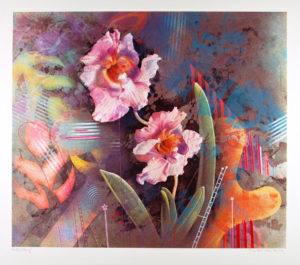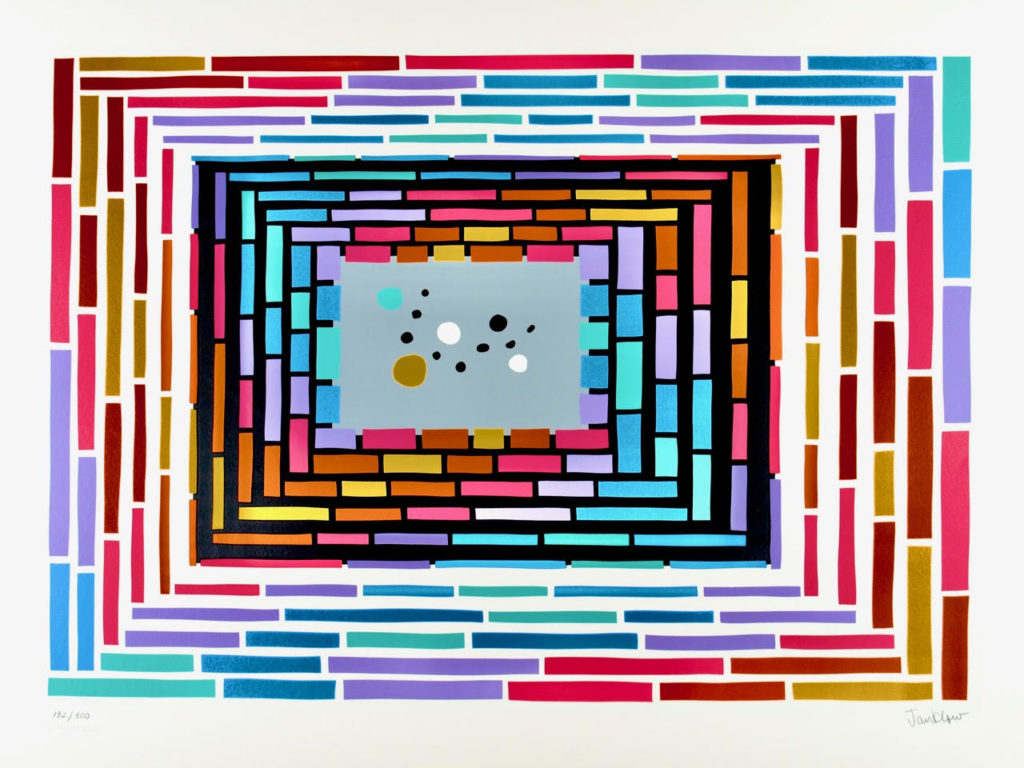Should You Buy a Giclée Print?

“Inner Light” Serigraph by Yankel Ginzburg
Obtaining fine art for the home is the goal of any art collector and admirer of fine furnishings. A person who values quality artwork wants the best for their space. In the quest for beautiful fine art, one may soon stumble upon the world of ‘giclée printing’, a growing medium of art reproduction. Although it has become a popular form of art printing, few know exactly what they are buying. Is a giclée print worth collecting after all?
What Is a Giclée Print?
Giclée, translated from French, can mean “to splash, spray, or spurt.” It is the term used to describe an inkjet reproduction of a digital photo of an art piece. Using so-claimed ‘archival inks’, a computer printer is used to recreate the image onto a material of choice (the artist’s or yours), including canvas, photograph paper, watercolor paper, and metal. Artists can sell these in either unlimited quantities or as limited editions, hand-signed.
How Is It Made?
It is important to understand giclée printing and other printing techniques so you can understand the quality, potential and durability of the piece you want to purchase, especially if you are interested in curating a valuable and lasting collection.
Giclée prints begin with a digital scan or photograph of a piece of artwork. The digital image goes into a computer file and can be printed on-demand for sale. In the printing process, the computer’s inkjet printer applies its inks to the paper or canvas.
Giclées and Serigraphs
Although giclée printers aim to use ink some believe to be archival, the resultant product can appear and actually ‘feel’ flat, like a common poster. Especially with the infiltration of lower-quality ink brands, giclée prints may fade over time, especially if placed in direct sunlight.
These two cons of giclée fine art, as well as the fact that it is a computerized product, puts it in a bad light compared to some other types of art prints, like serigraphs, which are silkscreen prints deriving from the ancient Chinese printing tradition. With silk screened prints, known as serigraphs, one can actually ‘feel’ the build-up of ink and know that the colors will remain stable and will not not fade in natural light. Serigraphy can produce deep blacks and opaque and brilliant colors. Also with serigraphs one can also be sure that unauthorized copies are impossible to make because the silkscreen is destroyed upon completion of the print. On the other hand, giclée prints, often sold online, risk the possibility of someone downloading the image or hacking the digital archive and selling prints illegally, clearly devaluing the product.
Are Reproductions Worth Collecting?
Another question that collectors may ask is whether or not giclée reproductions are worth collecting at all. It is a matter of choice, but an original print like a serigraph will likely have more value long-term than a giclée print.

“Bamboo 52” Serigraph by artist Len Janklow
Contact Zimmerman Fine Art Today!
Since 1979 Zimmerman Editions Ltd. has worked closely with many internationally acclaimed artists to execute editions of their most unique images. Collaborating directly with the artists, Zimmerman Editions’ atelier has printed, fabricated, and published many special limited editions of fine art … including both prints and sculptures. All images have been faithfully produced to meet the artists’ most exacting requirements and all screens and plates have been destroyed upon completion of printing. Many of these high-quality art prints and objets d’art are represented in public and private collections around the world.
If you are a fine art dealer or marketer, or interested in collecting contemporary fine art, contact us today through our short form or our number at 888-484-1850. For more about fine art, keep in touch through Facebook, Twitter, and LinkedIn!
